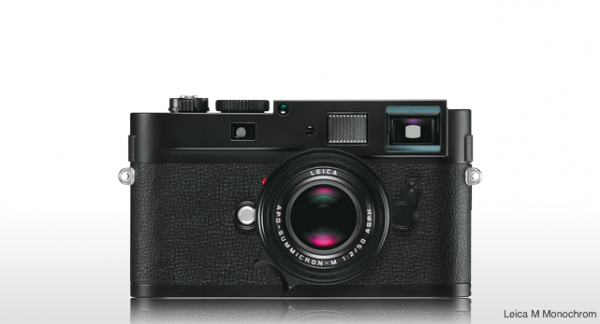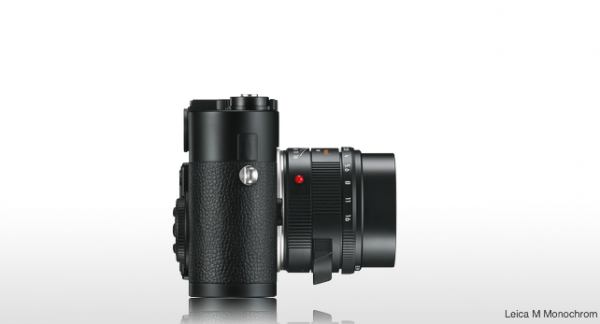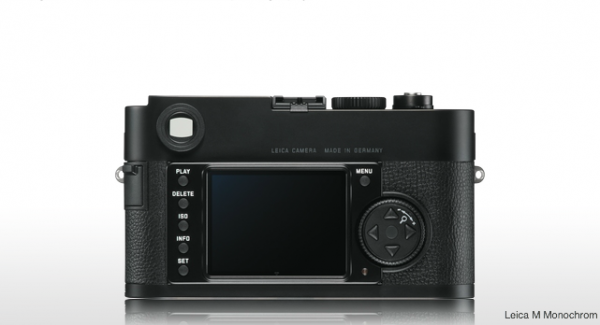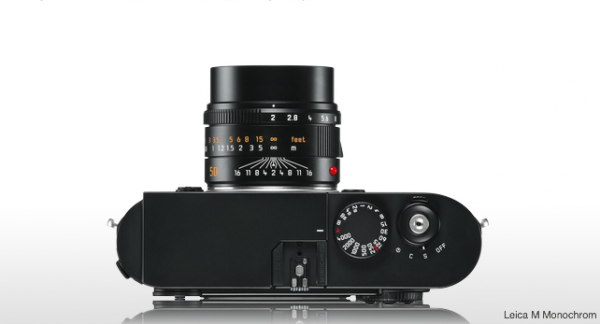Leica M Monochrom:
Hey everyone, did any of you get a chance to see the new Leica M Monochrom? As many of you know, Leica did a big announcement of new products today. I wasn’t going to mention it on this blog but I figured I could give my review I’m currently writing up on the Fuji 60mm a rest, and just mention it. So here’s what Leica says:
Countless iconic black-and-white photographs have been shot with the legendary cameras of the Leica M-System.
So it was time for a camera to continue this tradition and finally make it possible to deliver authentic monochrome photography in digital form: the Leica M Monochrom. It is the first full-frame, 35 mm format digital camera to be designed exclusively and without any compromises for black-and-white photography. It delivers ‘true’ black-and-white images in unrivalled sharpness and dynamic range. This makes the M Monochrom the perfect camera for anyone with a passion for black-and-white photography.
Incomparably sharp:
With a full native resolution of 18 megapixels, the Leica M Monochrom delivers 100% sharper images than with colour sensors. As its sensor does not ‘see’ colours, every pixel records true luminance values – as a result, it delivers a ‘true’ black-and-white image. The combination of the brilliant imaging qualities of Leica M-Lenses and the image sensor results in images with outstanding sharpness and natural brilliance.

Complete image control:
The Leica M Monochrom more than satisfies the expectations of discerning users with a raw data histogram for the precise control of tonal values. The difference from conventional histograms is that it displays unprocessed and unmodified raw data. The combination of this with a configurable clipping display allows precise correction or optimisation of exposures.
At the touch of a button, images captured by the M Monochrom can be converted with characteristic toning effects from black-and-white film photography (sepia, cold or selenium toning). All users need to do is save the image in JPEG format and select the desired toning effect – simply and conveniently, and with no need for post-processing.

Monochrome Workflow:
Leica M Monochrom buyers also benefit from a free online download option (available after registration of the camera) for the software packages; Adobe® Photoshop® Lightroom® 4, a professional workflow solution and the world’s leading black-and-white image processing software Silver Efex Pro™.
Silver Efex Pro 2™ offers an impressive collection of unique and powerful, darkroom-inspired tools for the creation of high quality black-and-white images. Silver Efex Pro 2 emulates over 20 different types of black-and-white film to recreate the glory of classical black-and-white film photography. The emulation of each film type is based on the analysis of many rolls of the respective type and guarantees perfect reproduction of the characteristic look of many popular films from ISO 32 to ISO 3200.

Leica Monochrom prints – an exclusive service for M Monochrom customers:
In collaboration with WhiteWall, the premium photo finishers, the Leica M Monochrom print service offers customers an opportunity to have exclusive black-and-white prints made from their images. With this service, digital images from the Leica M Monochrom can be printed on premium-quality baryte photographic papers. Thanks to development in the classical wet-chemical silver halide process, the prints are hardly distinguishable from their analogue counterparts printed from negatives.

Leica M Monochrom Price:
Price for this camera is about $8,000. I don’t know…a dedicated black and white only Leica M camera. It would definitely be nice to have, and I think it’s a great idea but at this price, If I had to choose between this camera or a regular M9/M9-P, I think that I would choose the M9 :). What do any of you think?



Sorry, but I just don’t get the rationale for this camera’s existence.
I get that it gives you extra sharpness, resolution, and DR vs. a Bayer filter-based colour system. But the inconvenience of having to carry around colour filters to achieve certain looks is just too much, I would think. This negates one of the single most important advantages of digital vs. film (namely, convenience…the others being cost and high ISO performance)
Why Leica did not simply go with a modern high-MP, low noise sensor (such as that in the D800E), and produce an M10 with it I cannot understand. Noise performance would have been on par with the M9-M, as would resolution and DR. And as an added bonus, B&W conversions could be done without the need for physical colour filters.
Such an odd decision; though admittedly, made by an odd company.
Hi Mike,
Thanks for your comment. I love Leica, and I love using their stuff but I agree with you. For those who shoot mainly in black and white this camera should be great for them. But you brought up two great points. It makes shooting with the camera inconvenient, and why doesn’t Leica just put a better sensor in an M10 like the 800E?
Plus, $7200 for a 50 Summicron? The 50 Summicron was always the sharp, fast little workhorse, which was rather easily attainable (in the Leica world), and now it costs more than the 50 and 35 Summilux ASPH. Some person on a photo forum brought up a good point: you can buy almost 2 50 lux’s for the price of this one summicron. This lens might be awesome, and Leica’s best but I think some of the appeal and magic of the 50 Summicron is gone when you have to pay over $7000 for it. It makes me a little sad to know that many won’t even be able to try the legendary 50 Summicron because the price rose over $5000!
Anyway, thanks again for leaving your commment here. Take care!
P.S. You have a great blog btw!